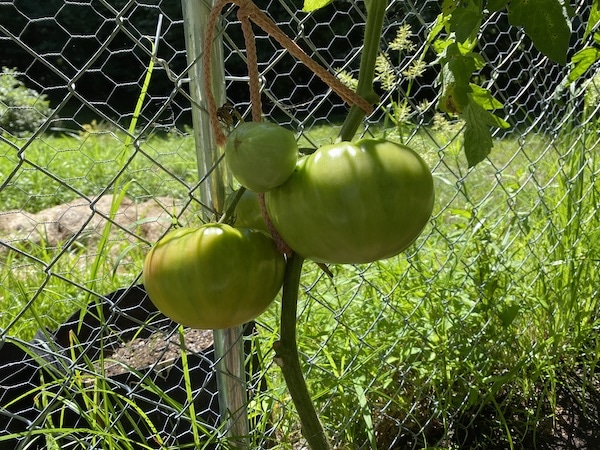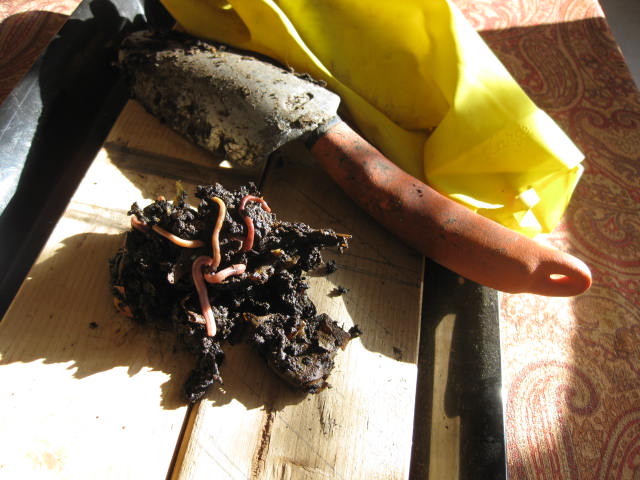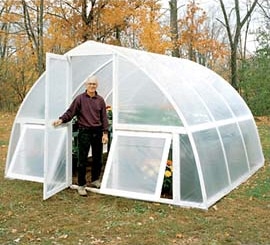Chicken manure pellets, a.k.a. poultry manure pellets, are an easy, economical way to provide a nitrogen boost to vegetable garden plants. When used with plenty of compost, these composted and processed pellets are an excellent cure for tired soil.
They are the next best thing to using your own composted chicken manure. Plus, convenient pellets are easier to measure out and add to the soil.
An important point about this fertilizer: the manufactures state that pellet processing protects against pathogens and fertilizer burn.
But I suggest that it’s still best to use chicken manure pellets safely around your plants, especially if you are growing food to eat.
Table of Contents
This is a long, detailed article. You can jump to where you want to be by clicking on the different sections below. To come back to this table of contents, just use the back button on your browser.
How to use chicken manure pellets
Chicken manure that has not been composted or has not finished composting will burn plants.
This is because highly concentrated fertilizer draws critical moisture out of flora. The result is plants that look like they are suffering from draught. The leaves turn yellow or brown and eventually die.
This is not the sort of thing you want for your garden. After all, you are looking to improve your plant’s performance, not hurt them.
Chicken manure pellet manufacturers process the manure so there is less chance of pathogens and plant burning.
But I am still careful. This involves keeping the manure three inches from the plant roots and stem. Using this method, I have had no fertilizer burn so far.
Let’s take a sec to get the legal words out of the way. This article may contain affiliate links. That means if you click and buy from my partners, I will make a tiny amount of money at no cost to you. This in no way affects my recommendations.

A lot of people ask “should I put pellets in the hole before transplanting seedlings?”
The answer is no. Chicken manure shouldn’t be up against the root ball or touching the stem.
In stead, you can use it in one of two ways:
Mixing new soil
If you are mixing up soil for a raised garden bed or container, you can add a little to your soil mix. All you need is five cups for every 10 square feet of growing space.
In fact, you can put less if you are also adding a healthy amount of compost to the mix.
Compost fixes a lot of soil problems not addressed by pellets. For example, it helps the soil retain moisture, which is important.
Leafy green plants such as spinach, arugula and lettuce benefit greatly by the mix of chicken manure pellets and compost.

Don’t use too much chicken manure because your plants will have very healthy dark green leaves, but fewer fruit (if we are talking about fruiting plants). The dark green leaves will likely attract insects that you don’t want.
For example, I put too much in my tomato beds and got a ton of hornworms.
There also is evidence that too much nitrogen will encourage the plants to grow more leaves instead of roots. This is not what you want.
Top dressing
If your plants are already in the ground, you can’t remix the soil. Instead, you can top dress using two cups for every 10 feet of soil.
Again, you can use less if you are adding compost at the same time, which is a good idea.
I didn’t think top dressing would work, but it does. It’s a very effective way to provide a nitrogen boost and add moisture holding capacity at the same time.

How to Improve Soil
All the ways I know to improve your soil.
Compost and cover crop
One point I can’t stress enough. Poultry manure pellets are not a replacement for adding compost or growing cover crop. You should use pellets in addition to these two valuable soil improvement techniques.
Compost and cover crop are excellent ways to promote valuable soil microorganisms. Plus, they add organic matter to the soil.
This not only helps feed your plants, it also lets soil absorb and hold moisture, which is critical to a successful garden.
Coop Poop pellets
Coop Poop pellets by Healthy Grow is the brand of chicken manure pellets I like the best. I like this brand because it seems more potent than other brands I’ve tried.
Plus, it’s OMRI-listed, which is important if you are an organic gardener.
OMRI (Organic Materials Review Institute) reviews products to make sure they are acceptable for certified organic production.
If at all possible, I don’t want synthetic chemicals in the veggies that I eat. OMRI-listed products are my best shot at avoiding bad stuff.
What’s in the Coop Poop bag exactly? It’s aerobically composted chicken manure.
This means that the chicken manure was broken down (composted) via microorganisms that use air in the composting process. This is the same way I compost.
The heat produced during the composting of Coop Poop is hot enough to kill harmful bacteria and pathogens. At least, that’s what they say.
There also is less smell than other manure products, although when watering the smell is not exactly pleasant.
Chicken manure pellets have a higher concentration of important nutrients than cow manure.
— Suburban Hobby Farmer
Healthy Grow says that, for the spring garden, you should use two and a half pounds (seven and a half cups) for a garden that is 100 square feet.
That’s three quarters of a cup for every square foot.
I think Healthy Grow is a little zealous with their application amounts. I’m not sure you need that much. Keep in mind that, if you are adding compost to the soil, you will need less chicken manure.
The only way you can be sure how much to add is to do a soil test. But I don’t do that. I just wing it.
If last year’s plants are light green or even turning yellow, I add pellets to the soil in the fall to prepare for the spring garden.
Fish fertilizer compared to chicken manure
Both chicken manure pellets and liquid fish and seaweed fertilizer are important tools in growing vegetables.
The brand of liquid fish and seaweed fertilizer that I use is Neptune’s Harvest. You can read all about it in my Neptune’s Harvest product review.
Neptune’s Harvest is a bit more expensive to use than Coop Poop. But it is more fast acting than chicken manure pellets.
It also provides important nutrients not available in chicken manure.
Liquid fertilizer in general is sort of like intravenous feeding for your plants because they can absorb liquid more quickly than dry fertilizer.
It’s for this reason that liquid fertilizer is best for feeding seedlings that don’t yet have a mature root system.
You should never use chicken manure directly on new seedlings. That would be asking for dampening off or fertilizer burn.
On the other hand, for your mature plants, Coop Poop is more long lasting. It will feed your plants over a period of months.
The directions say to reapply Coop Poop after about 4 weeks, but I’ve found this isn’t necessary. I wouldn’t describe it as slow release, as they do on the bag.
In my opinion, compost is a truly slow release soil amendment and Coop Poop is not.
But it does supply nitrogen for a much longer period of time than liquid fertilizer.
Here are the most common questions about poultry manure pellets:
Chicken manure pellets FAQ
Chicken manure pellets, a.k.a., poultry manure pellets, are composted and processed chicken manure. Vegetable gardeners use pellets as a soil amendment that provides a potent source of natural nitrogen. This plant nutrient is an important ingredient in making chlorophyll, so your plant leaves will turn dark green as a result of the increased nitrogen.
Because pellets are made of composted and processed chicken manure, they provide a number of plant nutrients. The most significant ingredient is nitrogen, which is abundant in chicken manure. Nitrogen helps promote green leafy growth in plants. Some brands of pellets have quite a bit of calcium, too. This is important for many vegetables, especially tomatoes.
While chicken manure pellets will help you grow large, vigorous tomato plants, you should not use too much. If you do, you will have large plants without much fruit. Evidence also suggests that too much nitrogen, the primary nutrient in chicken manure pellets, will encourage leaf growth over root growth. This is not what you want. But a small amount of chicken manure pellets, working in concert with plenty of compost, will help you grow excellent tomatoes.
Cucumbers benefit from a healthy dose of chicken manure pellets. This is especially true when chicken manure is combined with plenty of compost. The leaves will not turn yellow due to lack of nitrogen. If all other things are right, the vines will grow vigorously and cucumbers will be plentiful.
Chicken manure pellets have a higher concentration of the important nutrients when compared to cow manure. This is due, in part, to the fact that chickens are omnivores. They have a much more varied diet than cows, which are herbivores.
Most chicken manure pellet manufacturers state that they have properly composted their product, so it will not burn your valuable plants. But I believe in playing it safe. I don’t put chicken manure pellets within three inches of plant roots or stems. If at all possible, I work it into the soil in the fall, then plant and turn cover crop over it so that it is properly broken down and the danger has passed.
I recommend that you use no more than five cups of chicken manure pellets for every 10 square feet (five feet by five feet) of growing space. Work it in evenly and try to make sure that, if you are planting seedlings, the root ball or the stem is not touching any chicken manure directly. You could probably get away with a little less chicken manure if you are using a healthy dose of quality compost in addition to the pellets, which is a good idea.
Most chicken manure pellet manufactures state that they have composted their product carefully and that there are no harmful microorganisms. That said, it’s always good practice to work chicken manure pellets into the soil in the fall for spring planting. This gives the manure a chance to break down in your dirt.
Top dressing existing vegetable beds with chicken manure pellets is a great way to give your plants a midseason, nitrogen boost.
You can grow arugula more densely, and it will grow more quickly in soil that is amended with chicken manure pellets. Arugula has a tendency to turn yellow when planted too close together. This is especially true when it is planted in soil lacking in nitrogen. You can cure this issue by adding a little chicken manure pellets to the soil.
It’s become very popular to put fertilizer in the hole before transplanting tomatoes, cucumbers, peppers and other seedlings. But it’s not a good idea to put chicken manure pellets in the hole before transplanting. Pellets may burn the roots or stem if they touch the pellets directly. Instead, I work lower concentrations into the soil around the transplant. This has worked well for me.
If you grow an organic vegetable garden and don’t want any synthetic chemicals in your food then your pellets should be OMRI-listed. It’s the best way to help ensure that your vegetables are as healthy as possible. OMRI (Organic Materials Review Institute) reviews products to make sure they are acceptable for certified organic production.
Chicken manure pellets or poultry manure pellets are excellent fertilizer soil amendments for your container soil. But a little goes a long way. This is especially true if you are using compost in your mix. A quarter cup of pellets, mixed with compost, is all you need for most containers. If you find that your plant leaves are turning light green or even yellow, you may want to add more pellets as a top dressing.
When added to raised beds, chicken manure pellets improve the nitrogen level of your soil. High fertility and nitrogen levels in soil are important if you plan to use a raised bed for a square foot garden where plants are densely planted. Chicken manure can help you get away with planting more densely than otherwise would be healthy for your plants.
If you use too much poultry manure products, your fruiting plants will produce less fruit. This is because the plant focuses on making more leaves than roots or fruit. The plants will be very green and lush. They will look great. But your yield will be less than normal. It’s also likely that you will attract more pests that like to eat leaves, for example, hornworms on tomatoes.
Related articles you might enjoy:
- Three Important Soil Building Techniques
- What is “Deep Litter” in a Chicken Coop?
- Should You Mulch Raised Garden Beds?
Suburban Hobby Farmer is a participant in the Amazon Services LLC Associates Program, an affiliate advertising program designed to provide a means for sites to earn advertising fees by advertising and linking to amazon.com.
